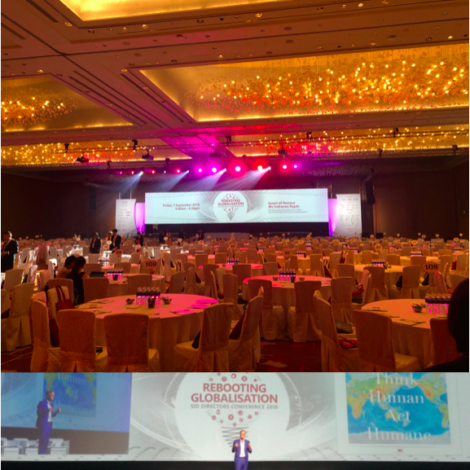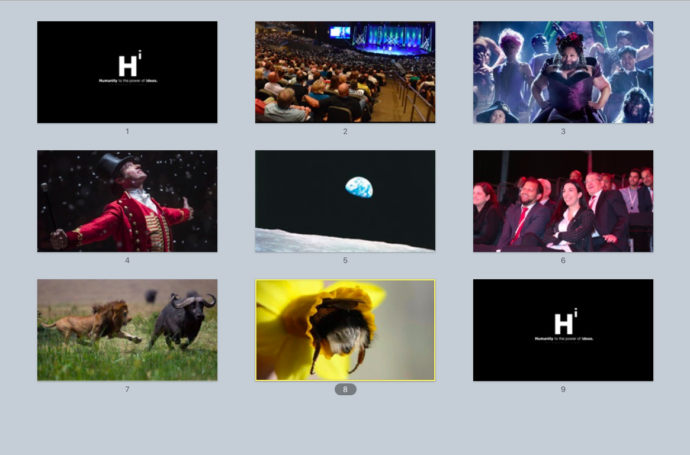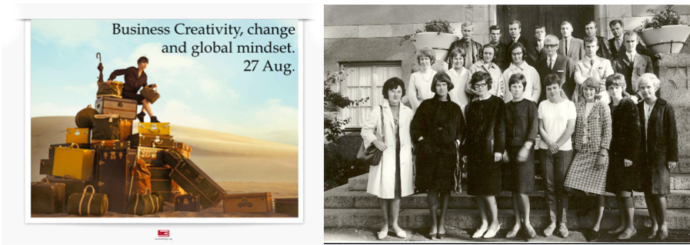
“Do you only have one keynote that you keep giving over and over?”
I get that questions sometimes and the answer is “No”.
Let me give you an example: On Friday I was invited to be one of two keynote speakers at The Singapore Institute of Directors conference. At the conference almost 1000 directors of Singapore companies gathered at Marina Bay Sands.
It is one of the largest conferences for business people in Singapore and since 2016 I have been invited to give three different speeches to the audience.
One one business creativity.
One on creativity in developing countries.
And this year on how and why you should develop a Truly Global Company.
That means that I have been asked to give three totally different keynotes to the same convention in 3 years.
Now each of these speeches are based on a book I have written. Each book takes at least two years for me to research and write.
That means that each speech has a lot of material that never makes it into any speech (Or another way of saying it: The research for one book can make it into many different speeches.)
And that means I could be invited back many times over to use other examples from my research. In a way I have almost infinite number of speeches I could give based on my research over 25 years. But people think I only have “one speech”.
Now I understand why that question comes. Speakers get famous (or at least well known) for a speech that they give (think Simon Sinek and “Start with Why?” or Sir Ken Robinsson “Does School kill creativity?”) and then they get asked time and time again to give that speech because the event managers have heard a speech they love and they want their audience to also experience this great speech.
So in a way speakers with great speeches get invited to give that speech to new audiences.
But at the same time speakers at the end decide what they say.
I love when people come up to me and say: “This is the X:th time I hear you speak and I always learn something new from listening to you.” (I actually got that comment from at least 5 people after the SID conference on Friday.) And at the same time the event manager is happy because they feel that their audience got to hear “that great speech” that the event manger had heard before and that he/she felt was so good he/she wanted it for his/her audience as well.
So no: Great keynote speakers do not just have “one great keynote”.
But yes, speakers with great speeches get invited to give the same speech because new event mangers want the speaker to deliver something that the event manger have already heard.
And by giving a speech multiple times a speaker learns how to deliver it better and better – making the speech better and better over time.
So how to balance the “create new material” and “perfect the perfect keynote”?
There is no easy answer to this question.
My anser would be that you need to do both: Always collecting new material and at the same time always keep perfecting your “main speech”.
A speaker that never adds new material will at the end get an outdates speech.
A speaker that always rewrites a speech from scratch will never get the time to perfect it.
So do both.
For me the idea of writing a new book every 2-3 years on a topic I am interested in at the moment makes me develop a brand new keynote speech and make me feel that I am growing – while having a couple of keynote speeches based on my core values that are “evergreen” keeps me grounded and I have clients who keep coming back and ask for the same speech over and over again.
ps. I do limit the number of examples that are available on online video. (I believe in showing a lot of material online, but not all. By limiting the amount of speeches that people can watch online but yet sharing quite a few speeches on Youtube you again strike a balance between being open and keeping some things for the audience to experience as fresh.)

